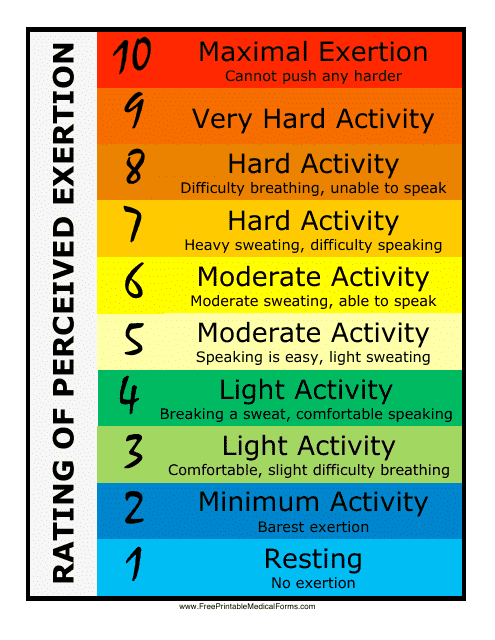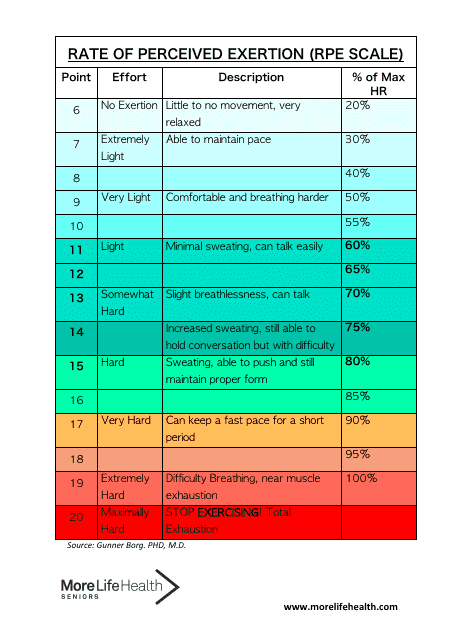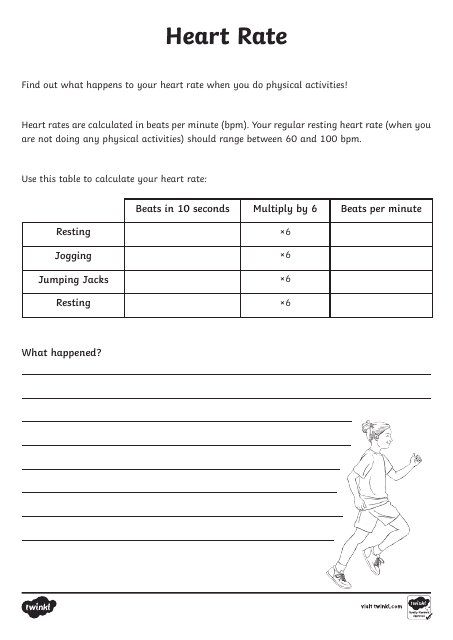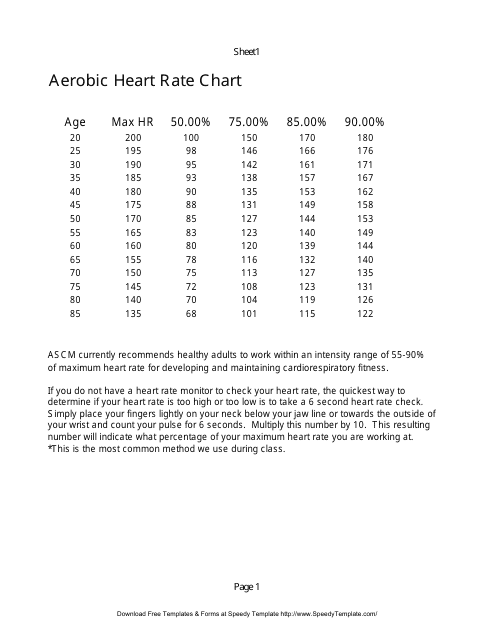Free Rate of Perceived Exertion Chart Templates
What Is Rate of Perceived Exertion?
The Rate of Perceived Exertion is a method for describing how difficult it feels to carry out a specific activity while exercising. It permits individuals to take into account the way that they feel throughout a particular exercise in order to gauge the difficulty of the activity.
A Rate of Perceived Exertion Chart contains given numbers which serve as the measure and it ranges from minimal exertion to maximal intensity, reflecting the way in which the individual carrying out the exercise may be feeling.
Alternate Names:
- RPE Chart;
- RPE Scale;
- Rated Perceived Exertion Scale.
A fitness enthusiast is tasked with determining how difficult they believe they are exercising while also taking into account the speed of breathing, pulse rate, increased perspiration, and aching muscles.
The difficulty of a broad range of exercises, including cardiac exercise, powerlifting, as well as the workload of a workplace, can be determined using the RPE Chart which produces a value for rated perceived exertion. This can help determine the optimal workload for each individual which is important in making progress because if the workload is too light, there will be no improvement. Likewise, if the workload is too difficult it can actually hamper the health of an individual.
For a full list of RPE Chart templates please feel free to check out our library below.
How to Calculate RPE?
In order to calculate RPE, a simple RPE calculator can be used. However, in order to do the correct calculation you should be aware of what RPE Chart you are using because there are two in existence. One is considered the “classic” and the second is a fairly modern one.
The classic RPE has a scale ranging from six to twenty and it is focused on the real pulse rate rather than the maximal pulse rate. A rather more recent and straightforward form that is a little more subjective is the scale which gives a value from zero to ten.
Just divide the pulse rate by a factor of ten to determine a value for the original RPE scale which starts from six. So, for example, if your pulse shows to be approximately 70 bpm, you would divide that measurement by ten to get 7. This means that your exertion is slightly elevated just above the average and lowest value which is 6. The number 20 on the scale, which is equal to 200 bpm, is at the other end of the spectrum. Only professional athletes typically reach such a high level on the scale.
The more modern scale starting from one is more discretionary because it isn't as dependent on the pulse and requires a high level of bodily awareness. If you decide to use this type, you should be aware of and believe your particular view of the way you are feeling. Although it is occasionally less academically precise, it is generally helpful and enables you to be aware of your own feelings.
Why Is RPE Important?
The RPE scale is not just important in working out at the gym, it is also crucial in situations like:
- The place of work of an individual;
- For medical studies;
- In science and research;
- Homes.
You must be self-conscious and mindful of the body's signals regarding the physical and psychological limits in order to use the RPE scale. An individual should be able to manage, monitor and modify the exercise program thanks to this information, allowing them to make any necessary changes if required. Based on a particular physical state, every individual’s measurement on the scale may be different. Below are a few instances of when determining the RPE can be of great importance:
- For people who require specific drugs, RPE is a rapid and precise approach to monitor their heart rate and levels of activity. RPE enables an individual to alter the strain they are putting on the body throughout workouts or in the workplace because health conditions can increase such hazards;
- Since it enables individuals to gauge the likelihood of suffering serious injuries, particularly those related to muscles, the RPE chart is useful for assessing job pressure. When the physical capabilities of a person are unable to stay level with the physical requirements of a career, injuries frequently occur.
Still looking for a particular template? Take a look at the related templates below:
Documents:
6
This document provides a chart to help determine the level of exertion during physical activity.
This document is a heart rate training table that provides a guide for determining target heart rate zones during workouts. It helps individuals track their heart rate and optimize their exercise routines for specific fitness goals.
This document provides a chart for the Perceived Exertion Scale, also known as the Borg Rating Scale. It helps individuals measure and communicate their exercise intensity levels.
This type of document provides a chart for the Rate of Perceived Exertion (RPE) scale. The RPE scale is used to measure the intensity of physical activity or exercise. It helps individuals gauge how hard they feel they are working during a workout.
This document provides a chart to calculate your heart rate based on your age and exercise intensity.
This document provides a chart that helps you determine your target heart rate when doing aerobic exercise.






